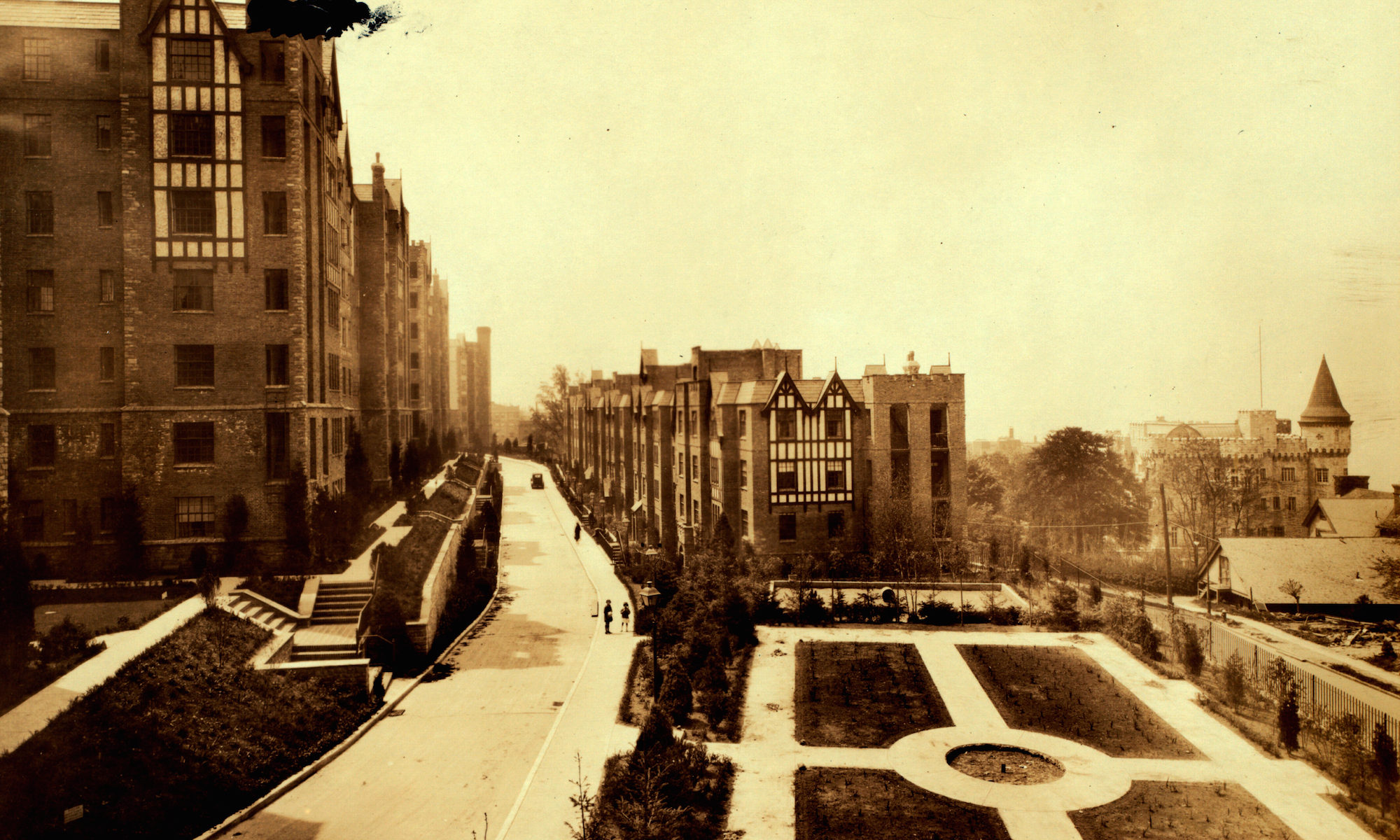$6,000,000 Apartment Project Planned by Dr. Paterno Overlooking Hudson
FIVE HOUSES TO BE BUILT
Occupy Seven-Acre Tract on Washington Heights South of Tryon Park
The New York Times Published: August 7, 1938
One of the well-known landmarks in upper Manhattan, the Paterno Castle overlooking the Hudson River at an elevation of more than 150 feet just north of 181st Street is about to be torn down and the site, in addition to the large vacant plot north of the Castle will be improved with five twelve-story detached apartment houses.
In announcing his decision to demolish his fortress-like residence which forms a picturesque feature in the Washington Heights landscape, Dr. Charles V. Paterno said yesterday that the many improvement in that part of the city, including the recent opening of Tryon Park, the gift to the city by John D. Rockefeller Jr., just to the north, had led to a strong residential movement in that area with a definite demand for the finer type of garden type apartments.
Project to Cost $6,000,000
Dr. Paterno estimated that the total cost of his projected improvements would cost, when completed, about $6,000,000. It represents one of the largest multi-family projects undertaken on Manhattan Island. The five large houses, he explained, will accommodate about 560 families and the suites will range from one and one-half to five rooms.
George Fred Pelham Jr., has been commissioned as architect. He said yesterday that work would begin at once and the new buildings are expected to be ready for occupancy early next Summer.
The property to be improved has a frontage on Cabrini Boulevard, the new name for that portion of Norther Boulevard north of 181st Street, of 1,070 feet. It extends from a point 178 feet north of 181st Street to 186th Street, now Chittenden Avenue. The frontage on the Westerly side, overlooking the Hudson River and the Palisades of New Jersey in the distance, is about the same. Dr. Paterno built on that section when completing his castle home a retaining wall more than 1,000 feet in length and that will be preserved. The tract contains approximately seven acres.
The new apartment group will be known as Castle Village. A large part of the property is directly opposite the Hudson View Gardens Apartments on the east side of Northern Avenue extending through to Pinehurst Avenue. These houses consist of thirteen units and were erected several years ago by Dr. Paterno from plans by George Fred Pelham.
Large Landscape Area
In explaining his plans for his latest building project on Manhattan Island, Dr. Paterno said that the five apartment structures will occupy only about 40 per cent of the plot, the remainder of which will be landscaped. Each unit will have four diagonal wings providing a long perimeter and bringing most of the windows within range of the Hudson River view. The facades will be conventionalized American Georgian style and eventually will be covered with ivy.
A feature which will be of interest to city apartment dwellers is the fact provision is being made for a central garage under the garden level for the storage of automobiles.
Every suite will have a large living room and every bedroom will have its individual bath. Many rooms will be of the so-called dropped type. The roof gardens on the Castle Village units will be practically 300 feet above the river level.
When Dr. Paterno built his castle in 1908, that section of Washington Heights was, to a large extent, a rural community. The old James Gordon Bennett home was near by in Bennett Park, which includes the site of the Revolutionary Fort Washington. To the north, in what is now Tryon Park, was the palatial Billings home, destroyed by fire several years ago, and in the vicinity were several other old-time residences characteristic of the period when that area was a suburban section of New York City.
The castle is constructed of white marble and was estimated to have cost about $500,000. It represents a combination of Roman and English architecture and is three stories in height. In the basement are a mushroom vault, a Turkish bath, swimming pool and large lounging room. Opening from a commodious hall on the first floor are a library, music room, a retiring “den” and bedroom.
A large organ operated automatically by an antique clock is on the second floor, and also the master’s bedroom, 80 by 20 feet, and several additional rooms.

